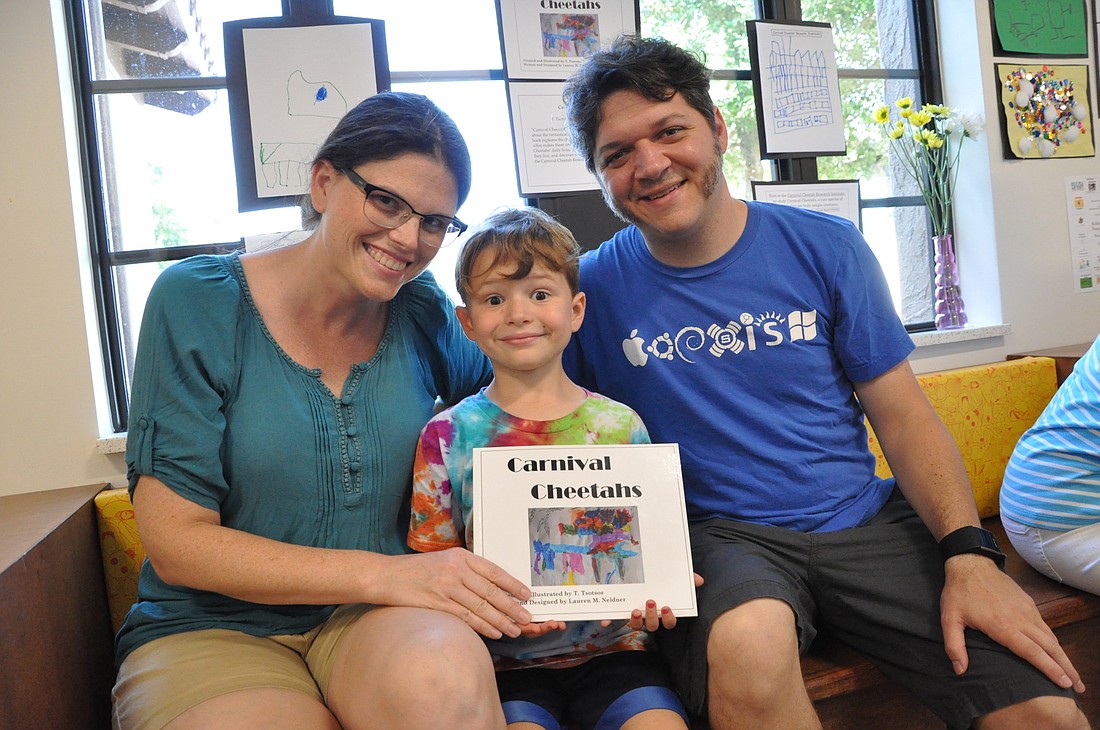- December 13, 2025
-
-
Loading

Loading

There’s an artist within all of us. Just ask the Hume House Child Development Center.
Budding artists at the Rollins College-affiliated preschool showed off their artwork and creativity at a gallery open to parents Saturday, April 28.
The drawings, sculptures and other artwork were the result of children being given creative freedom throughout the year. For the past 10 years, the Hume House has followed an Italian model of teaching known as Reggio Emilia, which allows the young students to create something unique, instead of everyone in the class making the same animal or theme. The curriculum involves long-term projects and in-depth exploration through art, building on the idea that children already have their own knowledge, ideas and opinions about the world at a young age. This year, students explored “connections,” specifically the children’s connections to themselves, family and the world around them.
“The reason we chose (Reggio Emilia) is because it was very child-centered,” Hume House Child Development Center Director Diane Doyle said. “Art should be very self-expressive. Children shouldn’t make the same things that everybody else makes just because they’re doing the same project. They create it in a way that’s unique to them.”
Art is seen as more than just a fun creative outlet at the Hume House, Doyle said. It’s a vehicle for expression that showcases a student’s understanding and knowledge of a subject.
“In Italy, the programs are obviously a little bit different because the culture is different, but here what we try to do is build all the things that we know children should learn into a curriculum that allows them to express all of their understand and their skills through art and activities and documentation,” she said. “There’s not going to be two of the same of anything in here, so that’s really important.”
Children undertook numerous art projects throughout the year. One of which was an endeavor where little ones were paired with Rollins College undergraduate students, who helped them put together their very own book using original artwork and stories from the preschoolers.
Anne Tsotsos’ son Theodore, 5, made a book about an imaginary species called the carnival cheetah.
“If you give (Theodore) crayons and paints and you sit him down and say, ‘Use these tools,’ he doesn’t respond well to that,” Tsotsos said. “He will, but it’s not his thing. But if you give him blocks and tell him he can paint and build something 3-D and explore … he really responds and discovers his inner artist in a way that makes sense for his likes and dislikes.
“Our house is packed with all of his art. We can’t throw any of it away, because it’s all amazing to him and to us,” she said.
Gretchen Forsythe has noticed a similar burst of creativity from her daughter Karis, 5, who used recycled items to make her art.
“I like using bottles to make sculptures,” Karis said. “I sculpt animals. I made a caterpillar with a bottle.”
There’s no telling what creative project Karis will bring home next, Forsythe said.
“I think when you give them the freedom to explore with all those materials and there’s no expectations of, ‘Oh, we’re going to make a bunny’ … they come up with some pretty neat stuff,” Forsythe said.